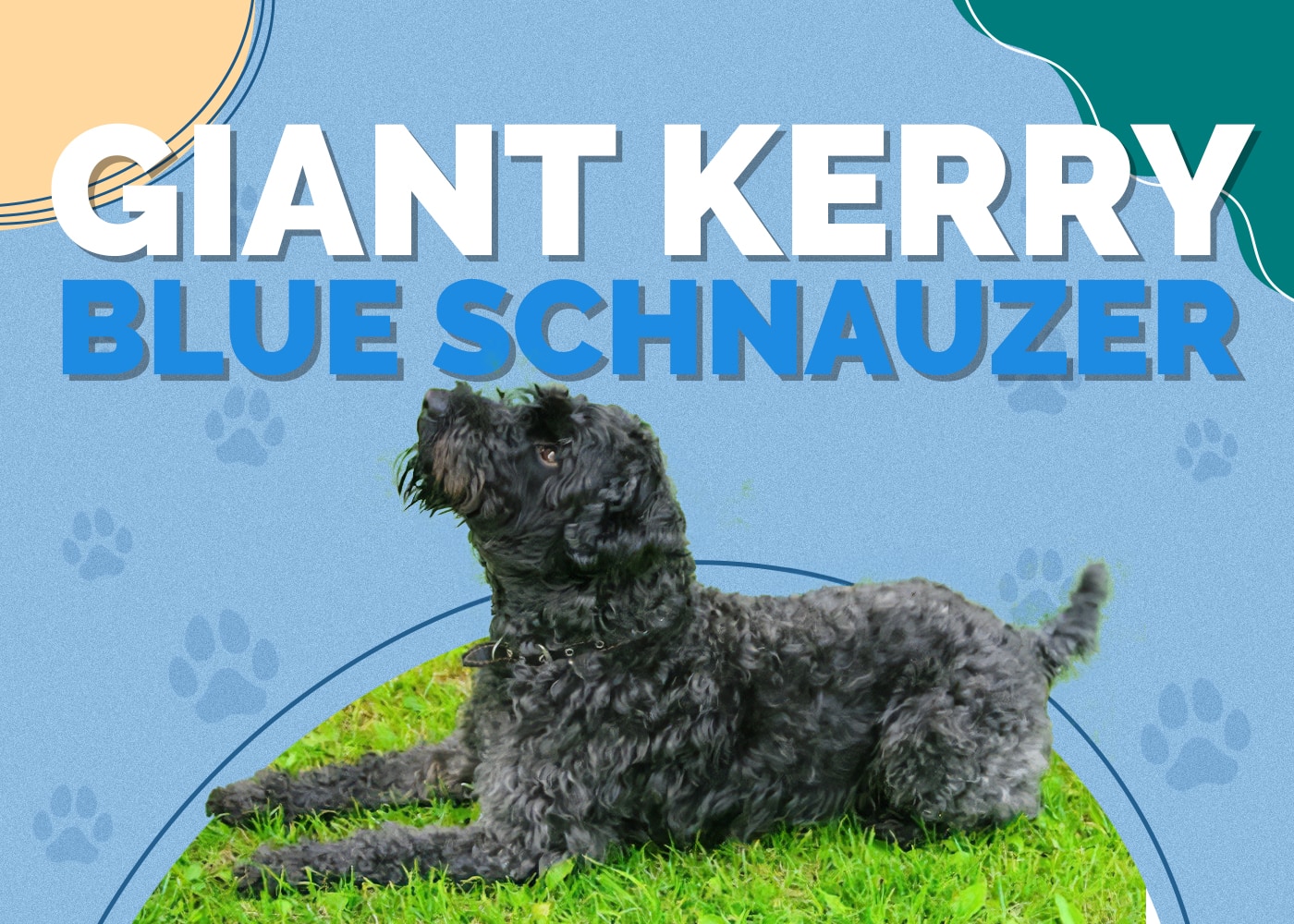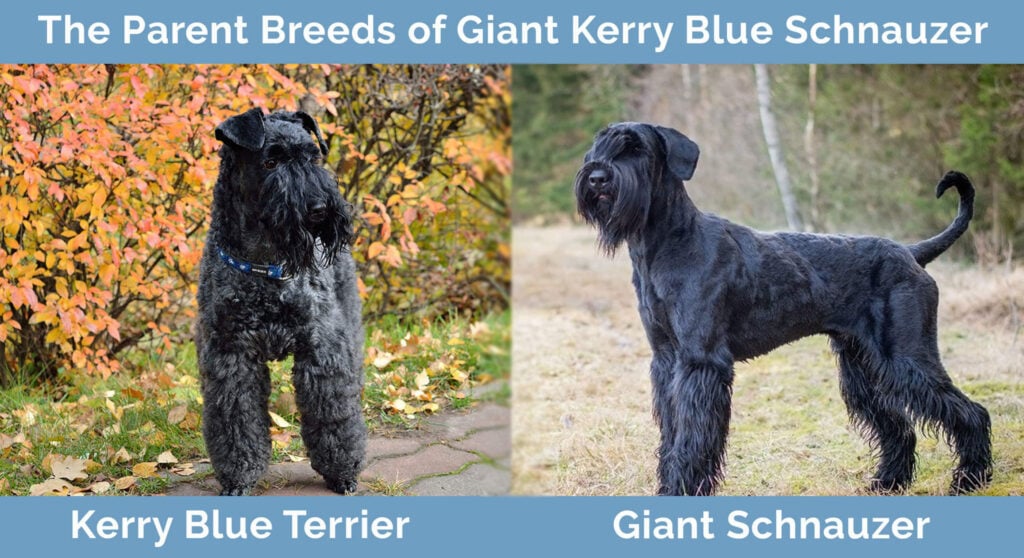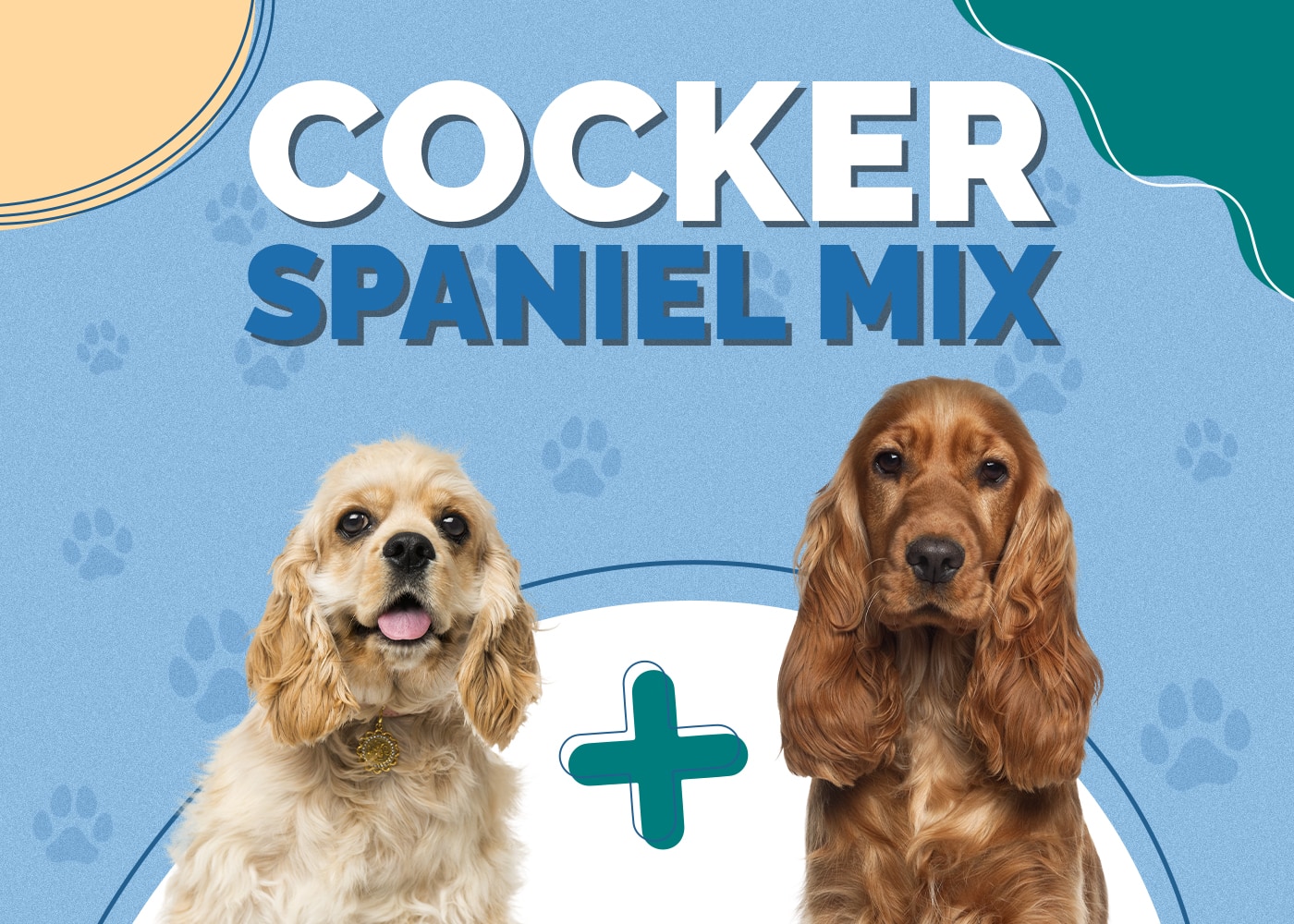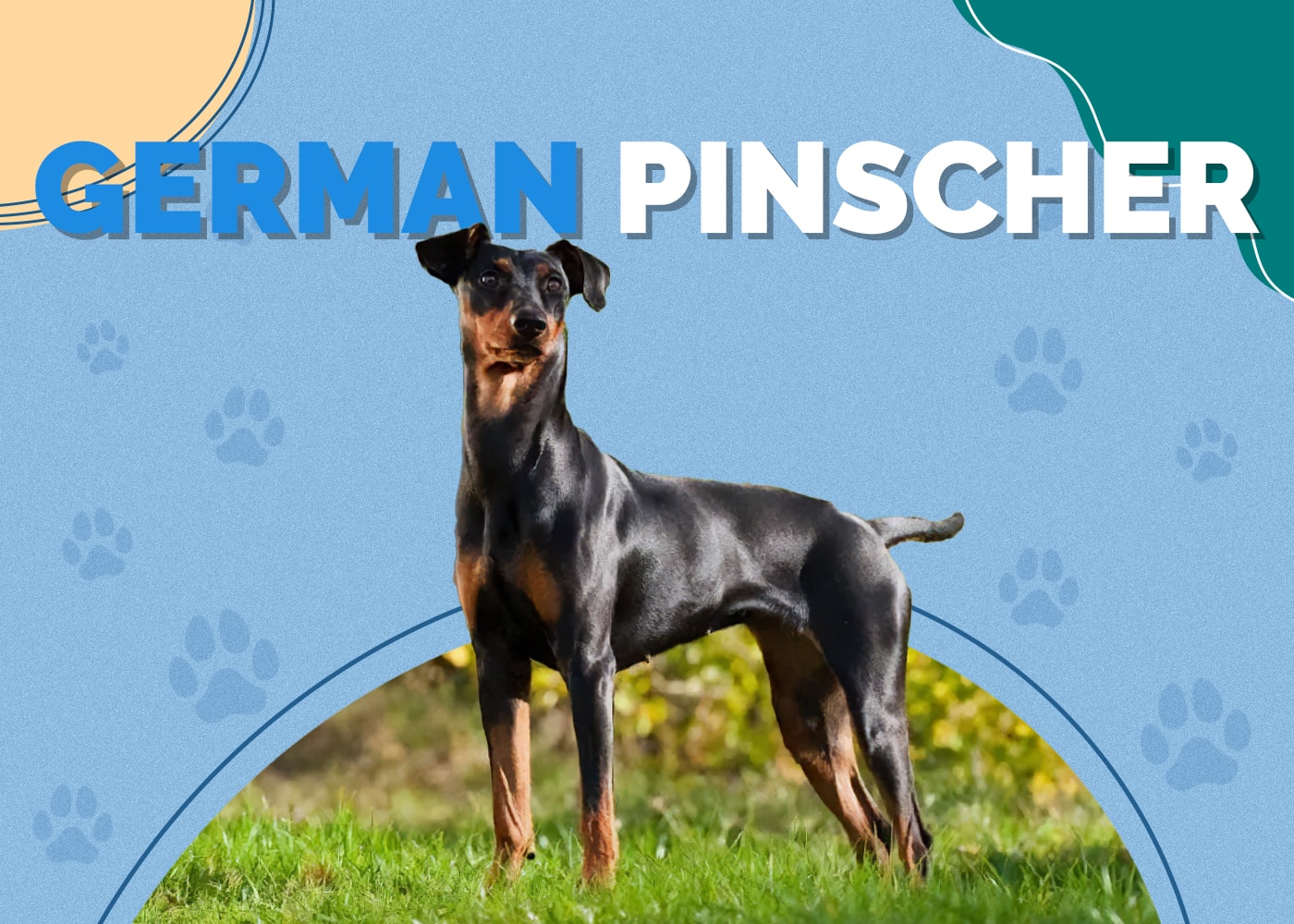Giant Kerry Blue Schnauzer (Kerry Blue Terrier & Giant Schnauzer Mix) Pictures, Traits & Facts

Updated on

Height:
18-26 inches
Weight:
30-60 pounds
Lifespan:
8-12 years
Colors:
Black, blue, grey, silver
Suitable for:
Highly active families and individuals with previous dog experience
Temperament:
Energetic, playful, intelligent, hard-working, confident, friendly, protective
Reaching heights of up to 26 inches at the shoulder, the Giant Kerry Blue Schnauzer is a large dog, though not quite as sizable as the name would have you believe. They’re a cross between a Giant Schnauzer and a Kerry Blue Terrier, two playful breeds that are bursting with energy.
These dogs are highly intelligent and very family-oriented. They’re naturally protective over their family and generally more reserved with strangers. Like both parent breeds, the Giant Kerry Blue Schnauzer is a playful pup that’s ready to romp all day long. Because of this, they really need a yard that they can run around in to release that energy. This is a breed that can easily become very destructive if they get bored.
Giant Kerry Blue Schnauzer Puppies
Giant Kerry Blue Schnauzers dogs are loving family pets, but they do have a strong prey drive that can easily take over. Even once trained, you’ll likely never be able to take your dog anywhere off-leash since their instincts might cause them to give chase to other dogs or animals.
These dogs are an excellent choice for experienced dog owners that can provide enough exercise and regular training sessions to their dogs. They are highly energetic dogs so they will be a good fit for active families who enjoy the outdoors. These protective and loving dogs create strong bonds with their human companions.
3 Little-Known Facts About the Giant Kerry Blue Schnauzer
1. Both Parent Breeds Were Hard Workers
Though most Giant Kerry Blue Schnauzers today live pampered lives as beloved family members, their parents tended to live much harder lives as working canines. Giant Schnauzers have long been used for a variety of jobs in Germany. For instance, they were used as police and military dogs in both major world wars.
Kerry Blue Terriers have also been working hard for many generations. These dogs were bred as hunters and farm dogs. Given the nickname of “blue devil,” these dogs were tough and courageous. In fact, they were even used to bay badgers. On the farm, they herded sheep and cattle, proving their usefulness as well-rounded workers.
2. They’re Aggressive Towards Other Dogs
Because of the Kerry Blue Terrier blood inside these dogs, it’s not surprising that they have a strong prey drive. As mentioned, Kerry Blue Terriers were adept at chasing down and baying badgers, which are some dangerous creatures that aren’t to be taken lightly. That same strong prey drive still exists in the breed today and has even been handed down to the Giant Kerry Blue Terrier. They still want to jump at every small animal they see, so expect to have to stop them from running off from time to time.
3. They’re Not Heavy Shedders
Shedding can be extremely annoying for dog owners, causing your house to fill up with piles of loose dog hair in every corner. Luckily, the Giant Kerry Blue Terrier isn’t known to shed a lot. Neither parent breed sheds much either, so it makes sense.

Temperament & Intelligence of the Giant Kerry Blue Schnauzer 🧠
Overall, these are friendly dogs that can be reserved with strangers. Their parents were used for a variety of jobs including policing and guard dog work, so it makes sense that they’re naturally protective. Likewise, these dogs are very smart and they can be given tasks to complete or jobs to perform. They need the mental stimulation, in fact, to help prevent them from becoming bored. If your Giant Kerry Blue Terrier gets bored, you’re going to have a very destructive dog on your hands.
On top of being hard-working and protective, these dogs are also very energetic. They love to play and run around. Expect to spend a good deal of time helping your Giant Kerry Blue Schnauzer to expend all that energy, or once again, a destructive dog is likely to be your result.
Are These Dogs Good for Families? 🏡
Because of their naturally protective nature and their high energy levels, Giant Kerry Blue Schnauzers are great family dogs. They need a lot of exercise and attention, which is easier to provide with multiple people in the household. Likewise, they need a lot of space, so an apartment isn’t optimal for one of these canines.
Does This Breed Get Along with Other Pets? 🐶 😽
Unfortunately, because of their high prey drive and tendency to be aggressive towards other animals, Giant Kerry Blue Terriers do not get along well with other pets. If socialized early and often, yours might learn to tolerate another animal. But they’d have to have grown up together from the time they were puppies. Otherwise, it’s generally best for these dogs to be the only pet in the household.
Things to Know When Owning a Giant Kerry Blue Schnauzer:
Food & Diet Requirements 🦴
These are pretty sizable dogs, so expect your Giant Kerry Blue Schnauzer to eat quite a bit. Three to five cups of high-quality dry dog food each day should do the trick. Ideally, you should match the food you’re providing to your dog’s life stage. So, puppies should have a puppy food blend, seniors should get a senior-specific food, and so on.
Exercise 🐕
Since they’re loaded with energy, these dogs need a lot of exercise. You should expect to spend a minimum of an hour each day wearing down your Giant Kerry Blue Schnauzer’s energy. If you don’t, you’re likely to have a very destructive pet tearing up your yard and home.
That hour needs to be spent on vigorous activity. A slow walk down the street isn’t going to cut it. Instead, try having a high-energy play session with a game of fetch or something similar.
Training 🦮
Coming from two working breeds, the Giant Kerry Blue Schnauzer is a very smart dog that excels at training and performing jobs. They can understand what’s being asked of them, but getting them to do it can be the difficult part. It’s recommended that only those with previous dog-training experience attempt to train one of these dogs.
Grooming ✂️
Luckily, this breed is rather low maintenance when it comes to grooming. Neither parent sheds much, so your Giant Kerry Blue Schnauzer isn’t likely to either. In fact, both parents are hypoallergenic, which means your Giant Kerry could possibly be as well.
You’ll want to brush your Schnauzer daily to make sure their coat doesn’t become matted and tangled. Bathing should only be performed when absolutely necessary.
These dogs do require some trimming, which is often best left to a professional groomer, so consider the extra time and expense that entails before adding one of these dogs to your family.
Health Conditions ❤️
One advantage that mixed breeds are thought to have over pure breeds is that they are less susceptible to health concerns that might plague either breed. While this often means that designer dogs have fewer health issues to worry about than pure breeds, that’s not always the case. Unfortunately, the Giant Kerry Blue Schnauzer is at risk for quite a few medical conditions.
- Entropion
- Hypothyroidism
- Autoimmune Thyroiditis
- Dry Eye
- Patellar Luxation
- Progressive Retinal Atrophy
- Hip Dysplasia
- Bloat
- Entropion: This is when the eyelids roll inward, which can cause hairs on the eyelid to rub on the cornea.
- Hypothyroidism: A hormone deficiency that results in weight gain, obesity, changes to your dog’s coat, lethargy, and more.
- Autoimmune Thyroiditis: This is a type of thyroid disease that causes the immune system to attack the thyroid gland.
- Dry Eye: The most obvious sign of dry eye is red, irritated eyes. This is when the cornea becomes inflamed and tear production ceases.
- Patellar Luxation: When your dog’s kneecap is able to dislocate or move from where it’s meant to be, it’s known as patellar luxation. This is one of the most common causes of lameness in canines. You’ll likely first notice it as skipped steps while your dog is running or walking.
- Progressive Retinal Atrophy: This is when the photoreceptor cells that make up your dog’s eye start to atrophy or waste. As they degenerate, your dog’s vision will continue to get worse until eventually, they go blind completely.
- Hip Dysplasia: A very common health condition that affects large dogs most often. This is when the hip malforms, resulting in an incorrect fit between the femur and hip socket. The result is pain, loss of movement, and eventually, lameness.
- Bloat: This disease is so dangerous that it kills about 30% of dogs that get it. It’s when a dog’s stomach suddenly inflates with air, which stops blood flow from the hind legs. This causes blood pooling and can get even worse if the stomach flips.
Final Thoughts
Though they’re not as giant as their name might suggest, Giant Kerry Blue Schnauzers are big dogs that are bursting with energy and playfulness. They make great family pets, particularly if you’ve got a bit of previous experience with dogs. They’re naturally protective and relatively low-maintenance, aside from their need for 60 minutes of intense exercise each day. If you have the time to devote to making sure your dog gets adequate exercise and never gets bored, then this breed might be a great fit for you and your family.
Related Article:
- Cane Corso Giant Schnauzer Mix: Info, Pictures, Traits, & Facts
- Chimo Dog (Chihuahua & American Eskimo Mix) Info, Pictures, Facts
Featured Photo Credit: Pashin Georgiy, Shutterstock












